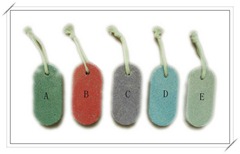Some Tips for import products from China
April 9, 2011 Leave a comment
Some Tips for importing from China
First I want to introduce myself as a exporter also a distributor in Hongkong, China. We are in the line of beauty care products. Here I want to share my experience of trading.
OK, let’s begin.
Why import from China?
Almost anything that you can imagine is made in this country. Because of lower wages and overall costs, prices for wholesale imports from China are almost unbeatable. It’s logical to import products that fit your market strategy from China. With some patience and due diligence, you can locate reliable suppliers in China.
Who to deal with?
Start importing goods from China by finding the best distributor; dealing directly with a factory is incredibly difficult even for Chinese speakers. A broker or agent will call around for the best possible price. Based upon the size of the order, brokers and manufacturer’s agents can get a decent discount on the price.
How to check the quality?
The most directly and fastest way to check the quality is asking for some samples. Express delivery services (e.g., UPS, DHL and FedEx) have major distribution hubs across China, with guaranteed 24 hour next-day delivery between major cities in China and America. They are much expensive to pay for them in China, so I advice you to have an account to collect the delivery cost on your side. It’s safe, easy and fast. Most of supplier would send some free samples but not willing to pay for the Express Delivery.
How to delivery the goods?
In my experience, as to small quantity products (weight between 10KGS to 200KGS ) also you want the products get to you in a week, the economic air shipping is the best way to choose. Especially the gross weight between 30KGS to 200KGS, it’s much cheaper to send my Hongkong which means you don’t need to pay hundreds of money for customs. We all know that Hongkong is a free-trade area. That’s what we do for our clients to save money and time.
As to big amount of products, you’d better have your products send by sea.
- Deal directly with a reputable agent. Shipping through Chinese customs requires a skilled professional shipping agent. The agent must be licensed with the Chinese government in order to ship overseas. All goods must have several official documents accompanying them through the customs clearance process.
- Most suppliers have deal with logistics, so they can arrange for shipping as well by getting good price and good service.
Worried about the Customs Duty?
Many times I had been told by my clients that the customs duty were to high (45% or more). I am not sure whether will it helpful for you or not. Most of our clients told me to make two copies of Proforma Invoices. One is the Original Invoice, the other one was made according to their requirement (much lower price you know:)
How about the payment?
There are many ways of payment terms. While T/T and Western Union are most popular to your trustworthy supplier. If come to new supplier, it will be safe if the supplier has their company bank account. If not, you can pay by paypal (but I found it’s not popular in China), L/C, or pay deposit first, then by the understanding while the products are read to shipping.
More information please link our catalog:http://www.box.net/shared/rednstv8fq
and write to us at: factories.alliance@gmail.com











